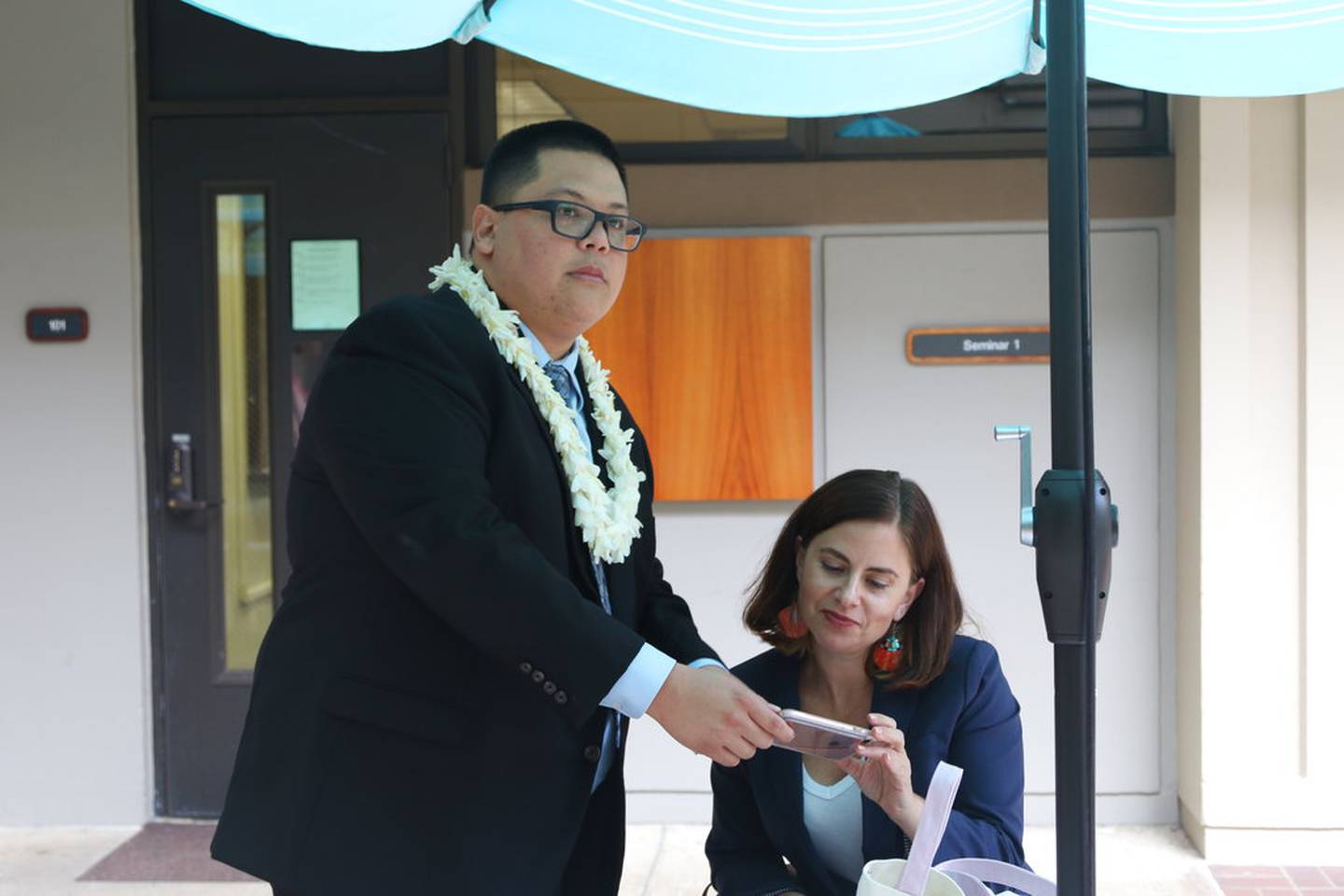HONOLULU — The question before a panel of U.S. appeals court judges: Should non-native residents of Guam have a say in the territory’s future relationship with the United States?
Three judges from the 9th U.S. Circuit Court of Appeals were at the University of Hawaii’s law school Wednesday to listen to arguments in an appeal of a federal judge’s 2017 ruling that says limiting the vote to those who are considered native inhabitants of the island is unconstitutional.
Voters would have three choices: independence, statehood and free association with the United States similar to island states that allow the U.S. exclusive military access to their land and waters while their citizens have the right to live and work in the U.S.
Arnold Davis, a white, non-Chamorro resident of Guam, sued in 2011 after his application to participate in the vote was denied.
Last year's ruling concluded that even though Guam has a long history of colonization and its people have a right to determine their political status with the United States, it's unconstitutional to exclude voters simply because they "do not have the correct ancestry or bloodline."
The ruling cites a 2000 U.S. Supreme Court decision that allows non-Native Hawaiians to vote in elections for Office of Hawaiian Affairs trustees.
Guam appealed.
The vote would only be a "symbolic, but no less sacred, non-binding expression of a political opinion of a subset of Guam," Julian Aguon, an attorney representing Guam, argued Wednesday.

The vote would have ramifications for all who live on the island, said Davis' attorney, Lucas Townsend. “This is a taxpayer-funded, government-sponsored vote involving the territory’s election machinery,” he said.
Guam plans to submit results to the president of the United States, Congress and the United Nations, Townsend said.
Voters wouldn't be limited based on their race, but would include only those who were granted U.S. citizenship through the 1950 Guam Organic Act and their descendants, Aguon said. Court documents in the case cite 1950 census data showing that the vast majority of the non-citizens on Guam at the time were Chamorro.
About one-third of the U.S. territory's 160,000 people identify as Chamorro, the indigenous group that is believed to have migrated to Guam from Indonesia and the Philippines an estimated 3,500 to 4,000 years ago. The U.S. took control of Guam in 1898 after the Spanish-American War.
The Navy ruled the island until Japan took control in 1941. The U.S. installed civilian leadership and granted citizenship to Guam residents in 1950.
RELATED
Guam
It’s not clear when the judges will issue a ruling.
Upholding the lower court ruling will effectively end Guam's self-determination effort, Aguon said after the hearing.
“This case is so important because it’s about defending the sacred right of self-determination, even if it’s a symbolic vote,” he said. “It really matters to the community. Guam has been colonized for hundreds of years, and this would finally give us some semblance of dignity to be able to have just this non-binding vote. And that’s what it means to me as a Chamorro as well.”





